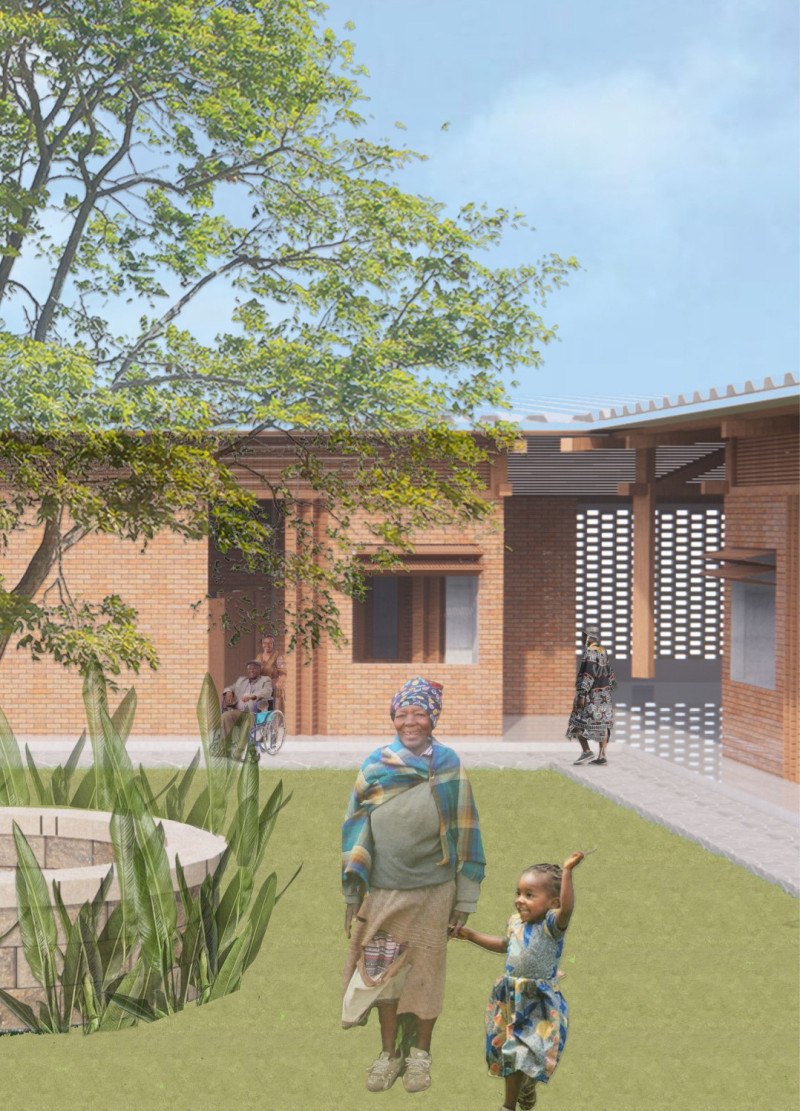5 key facts about this project
At the heart of the project's design is the concept of sustainability and community engagement. This is evident in the thoughtful integration of natural materials, which emphasize a connection to the surrounding landscape. The design employs reinforced concrete for structural integrity while allowing for variations in form and space. Extensive use of glass not only enhances the building's visual appeal but also ensures that natural light floods the interior, creating a pleasant atmosphere. Furthermore, the incorporation of sustainable timber adds warmth to the design, inviting occupants to feel at home in their environment.
The functionality of the project is multidimensional, catering to both private and communal needs. The spatial organization cleverly balances openness with intimacy, providing expansive shared areas that encourage social interaction while still allowing for private retreats. Distinct zones within the project enable different activities, from collaborative workspaces to quiet reading nooks, fostering a diverse range of experiences for users.
One of the project’s notable aspects is its commitment to biophilic design. Large, operable glass panels blur the boundaries between indoor and outdoor spaces, promoting a cohesive relationship with nature. Additionally, the inclusion of green roof systems not only enhances insulation but also contributes to urban biodiversity, demonstrating a holistic approach to modern architecture.
The architectural project also reflects a keen awareness of its surrounding community and environment. Various elements have been included with the intent to foster connections among residents. Shared amenities, such as communal gardens or terraces, create opportunities for interaction and invite community participation. The thoughtful design acknowledges that architecture shapes more than just physical spaces; it influences social dynamics and promotes relationships.
Furthermore, the project may incorporate adaptive reuse aspects, where existing structures are thoughtfully integrated into the new design. This not only preserves historical elements but also showcases a commitment to sustainability and responsible use of resources. By blending old and new, the design honors the past while looking forward to future possibilities.
Innovative energy solutions are also a key feature of this design, reflecting current trends in architecture toward sustainable practices. The integration of renewable energy technologies, such as solar panels or geothermal heating, emphasizes an environmentally conscious approach that reduces operational costs and minimizes the project's ecological footprint. This forward-thinking perspective positions the project as a model for future endeavors in conscious architecture.
The unique design approaches adopted in this project position it as a relevant example in today’s architectural discourse. It not only meets the needs of its occupants but also stands as a testament to the importance of thoughtful, responsible design in modern architecture. Each detail, from material selection to spatial configuration, plays a vital role in creating a cohesive and functional whole.
To delve deeper into the nuances of this architectural project, readers are encouraged to explore the various elements of its presentation. A closer examination of the architectural plans, architectural sections, and architectural designs will provide additional insights into the ideas and intentions that drive this compelling example of contemporary architecture. This exploration will further highlight the project's relevance and contribution to ongoing discussions about design and built environments.


 Phillipa Babirye Kasule
Phillipa Babirye Kasule 























